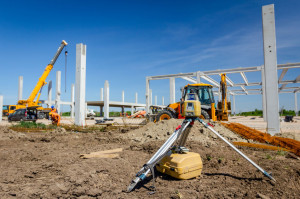 Laser scanning can greatly speed up surveying and provide far more information in design documents and AutoCAD drawings. But it takes more than having the tools to earn the benefits of this new technology.
Laser scanning can greatly speed up surveying and provide far more information in design documents and AutoCAD drawings. But it takes more than having the tools to earn the benefits of this new technology.
Laser scanning has taken some major advances even in the past year. Let’s take a closer look at what it takes to get the most out of laser scanning today.
Start at the end
The first step to getting the most out of this technology is to clearly identify why you are doing it. What will be the use of the collected data? This could be more complete planning documentation, verifying existing conditions, construction in progress, planning demoliltion, or helping to coordinate construction operations.
It’s essential to clarify the end use of the data gathered by laser scanning, so that you get the information that you need.
Know the space
The space being scanned is critical to the laser scanning operation. There’s a huge difference between outdoors and indoors space, in terms of the techniques and tools used. But there’s even more information needed. Whether an interior space is occupied or unoccupied makes a big difference, too, in terms of how the technology can work.
Before beginning the laser scan, identify which elements in the space you want to include in the survey. There are some that you will need more details on than others — make sure they’re included in the plan.
It’s also essential to define how much detail you will need. Where you need high resolution, you will need to set the laser scanning resolution higher. However, there are areas where you do not need as high resolution, and you can save time by reducing the level of detail captured.
Know the time
Every surveying, construction or demolition project has a finite amount of time available to be finished. That means that the data collected will be needed at a critical moment. You need to have the deadline for the full data set defined at the outset of the project.
Know the goal
What will the client or end-user of the laser scanning project need? A CAD file or a finished plan? How will the client use the data collected? This will affect the tools used and the data collected.
Collect more than you need
When it comes to data, more is more. During the laser scanning process, it always pays to collect more information than you think you will need. It’s far easier to disregard data points that you don’t need after the scanning is done, than it is to fill in missing information. It’s also a lot more expensive to re-do an operation a second time to collect data that you realize you need after the fact.
Divide and conquer
During the laser scanning process, it’s useful to divide up the area to be scanned into manageable sections. This helps not only to manage the process, but also the data that results.
Make a plan before you start scanning. Divide the area up into logical sections, based on the characteristics of the space. This will help you use the data and build a model that you can use.
Upgrade early and often
Laser scanning technology moves quickly. It’s essential to stay current, in terms of resolution, scanning speed, data collection and other aspects of the business. And like other technologies, the cost keeps going down — so there’s no excuse to avoid this technological advance anymore.
Talk to McNeil about laser scanning
Laser scanning can help you save time and money, and achieve better results on your next project. Talk to us before starting your next project.








